The ceremonies of the Santos Passos (‘Holy Steps’, in Portuguese) – a representation of the holy steps of Christ’s Passion – date back to the early days of Christianity in Goa.
While the Holy Week services comprise the most intense moments of the Lenten observances, many churches spread them out over the 40 days of Lent.
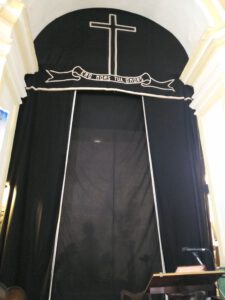
At the church of Our Lady of Immaculate Conception, Panjim, a huge black screen is put up every year, on the first Sunday of Lent, at the archway leading to the chancel. As a little child, I was overawed but also curious to know from my Dad the meaning of the Latin expression inscribed very high up: “O mors, ero mors tua” means “Oh death, I will be your death”.
Only much later, I got to appreciate John Donne’s poem, “Death, be not proud”, which ends with the line “Death, thou shalt die”. The words are from Hosea 13: 14.
Similarly, in John 11: 25-26, Jesus said, “I am the Resurrection and the Life; he who believes in me, though he die, yet shall he live, and whoever lives and believes in me shall never die.”
Inside the chancel of the Panjim city Church of Our Lady of Immaculate Conception, or say, behind the black curtain, the tableau changes every Sunday. Here are scenes of the first four Sundays of Lent.
- The Agony in the Garden 2. Jesus is condemned by Pilate 3. The Flaggelation 4. The Crowning with thorns
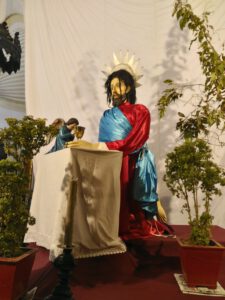

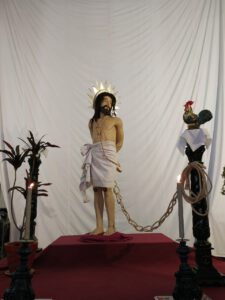
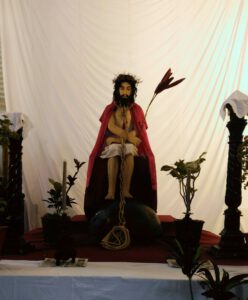
The fifth Sunday of Lent is observed as Palm Sunday, alternatively called Passion Sunday. At this church, the scene is festive in the morning. By afternoon, the mood changes. After the evening Mass, the tableau portrayed is that of Jesus carrying the Cross. At other churches in Goa, this tradition of this tableau could be different. In fact, old parish churches in North, Central and South Goa have their peculiar traditions in this regard.
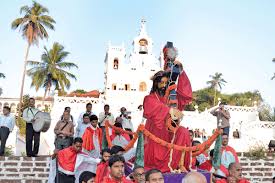
The larger-than-life size statue follows a procession of the faithful, down the zigzag stairs of the city church. The procession wends its way through the city streets, much like the procession on Good Friday, and returns to the church by Angelus time.